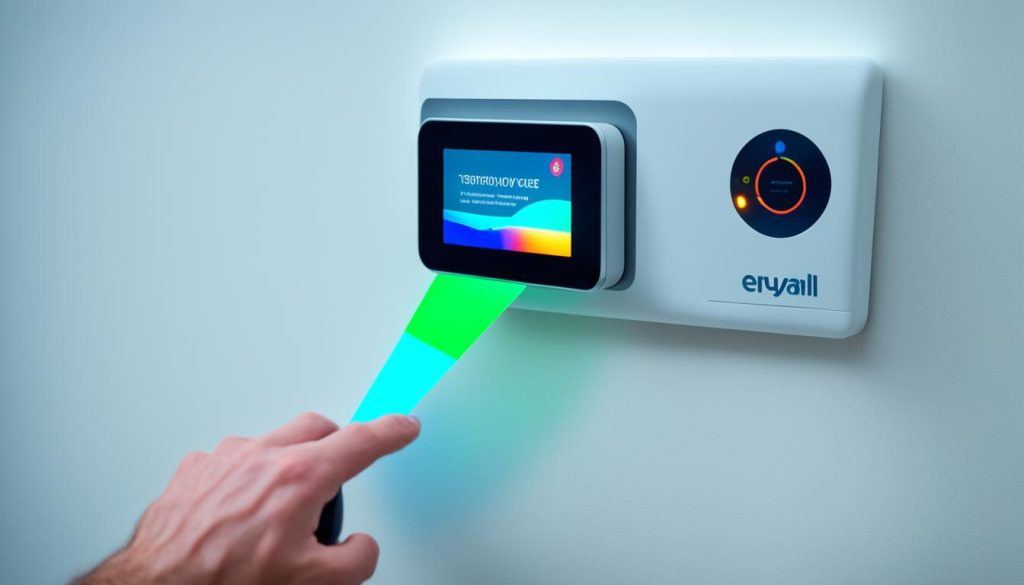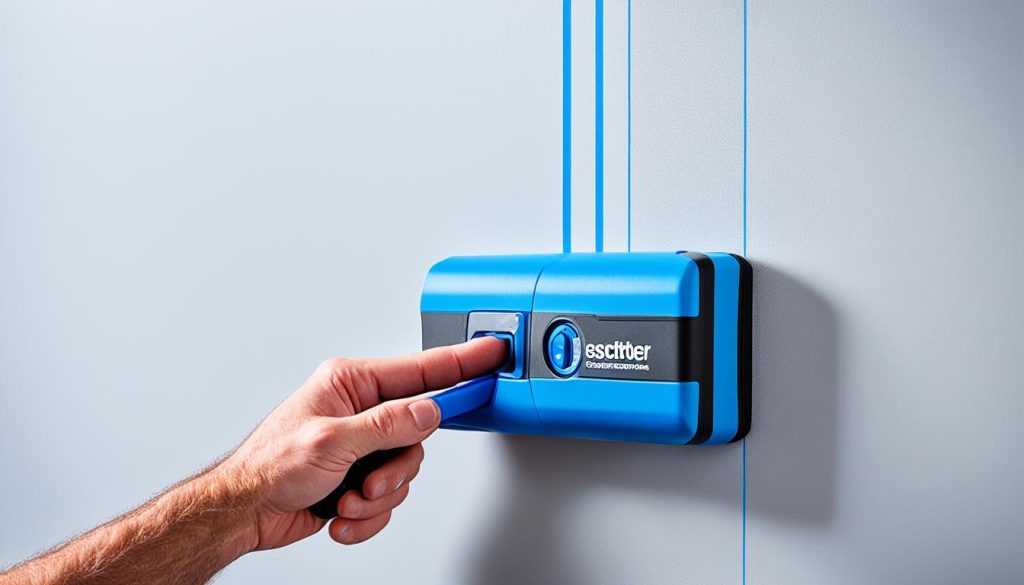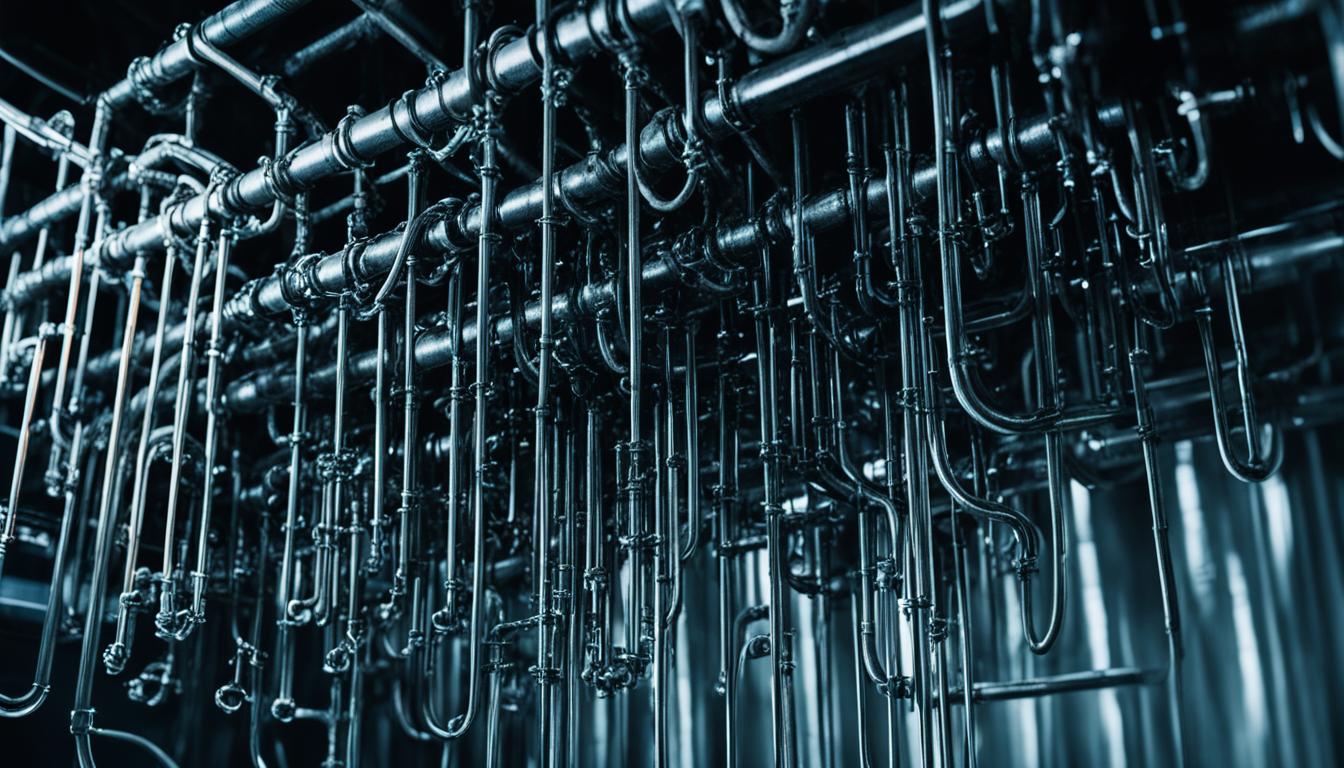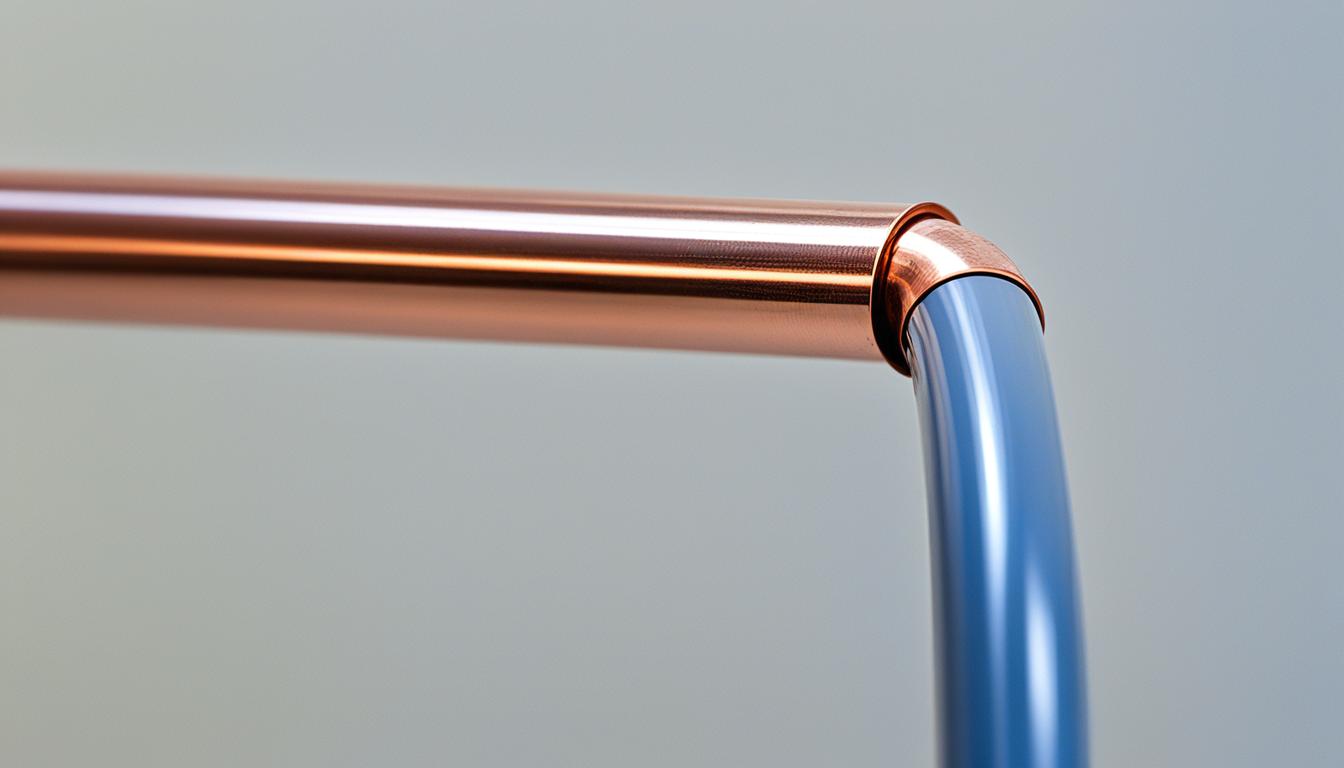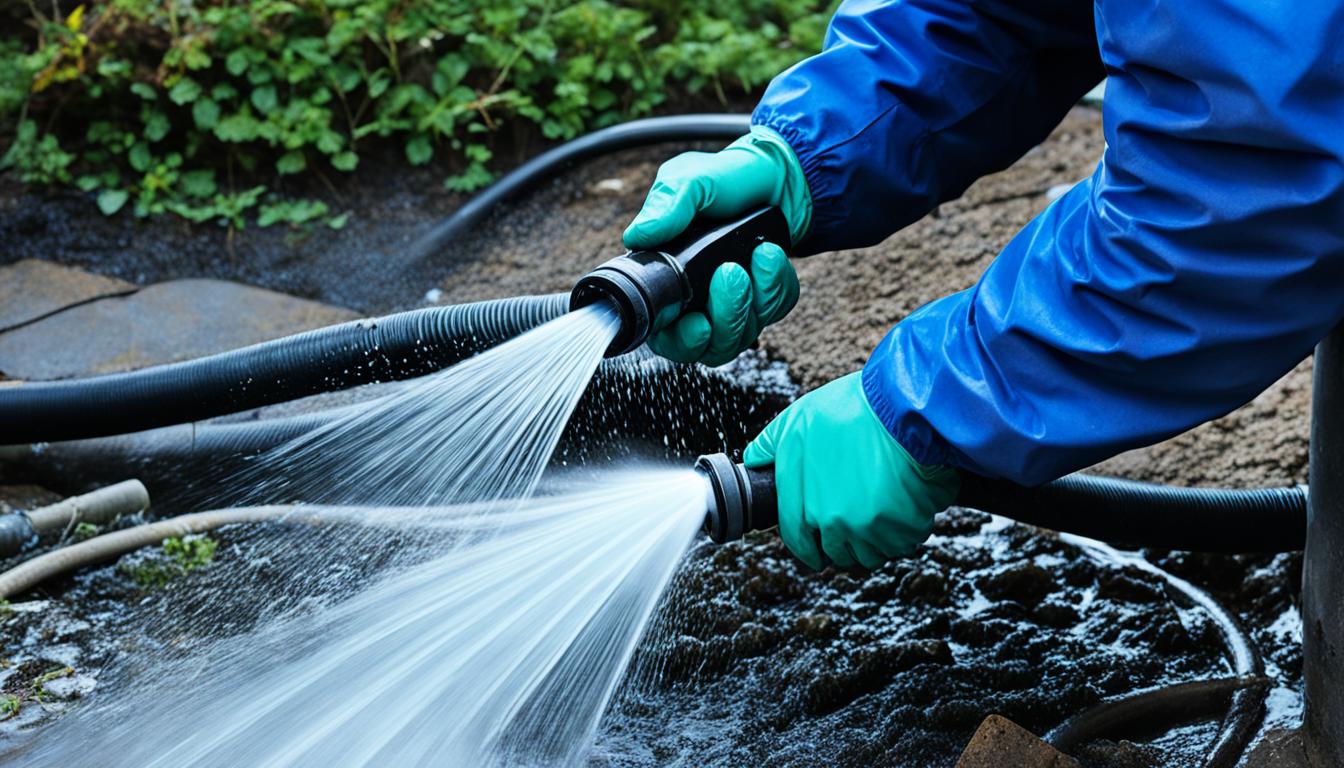Locate Hidden Plumbing: How to Find Pipes in Wall
Did you know that nearly 90% of plumbing issues in homes are caused by damage to pipes during renovations or remodeling projects? It’s a staggering statistic that highlights the importance of knowing how to find pipes in your walls before starting any construction work.
Locating pipes hidden behind walls is not only crucial for the safety of your plumbing system but also for preventing costly repairs. Whether you’re a professional plumber or a DIY enthusiast, understanding the exact location of pipes can save you time, money, and potential headaches.
Key Takeaways:
- Knowing the location of pipes in your walls is essential for safe renovations and effective plumbing detection.
- By following the proper steps and using the right tools, you can easily locate hidden pipes in your walls.
- Finding pipes in walls can help prevent damage, avoid costly repairs, and ensure the safety of your home’s plumbing system.
- Using a stud finder can be a reliable method for locating water pipes in walls.
- If you’re unsure or uncomfortable with locating pipes yourself, it’s always recommended to seek professional assistance.
Why Do We Need to Find the Pipes in Walls?
Knowing the location of pipes in your walls is of utmost importance. Whether you’re dealing with a potential leak or planning a home improvement project, identifying the precise position of the pipes is essential. By finding the pipes in walls, you can prevent damage that could lead to costly repairs and safeguard the integrity of your plumbing system.
When it comes to plumbing issues, such as leaks or bursts, immediate action is crucial. Locating the pipes allows you to pinpoint the source of the problem, enabling you to address it swiftly and effectively. Without this knowledge, you may struggle to locate the issue or perform repairs accurately, resulting in prolonged damage and increased expenses.
Additionally, finding pipes before beginning any construction or renovation work is vital for avoiding costly and unnecessary repairs. By using tools or techniques to detect the exact position of the pipes, you can safely proceed with your project without accidentally damaging or puncturing them. This proactive approach saves you time, money, and the hassle of dealing with unexpected plumbing issues.
Protecting Your Home’s Plumbing System
Your home’s plumbing system plays a crucial role in maintaining a comfortable and functional living space. Damage to this system can disrupt your daily activities and lead to significant inconveniences. By finding the pipes in walls, you take preventive measures to protect your plumbing system from avoidable damage.
Imagine drilling into a wall without knowing the location of the pipes. One wrong move can result in serious consequences, such as flooding, water damage, or even structural issues. By investing time and effort into locating the pipes beforehand, you safeguard your home and avoid expensive repairs that could have been easily prevented.
| Benefits of Finding Pipes in Walls |
|---|
| Prevent damage to pipes during construction or renovation projects |
| Ensure the safety and integrity of your home’s plumbing system |
| Avoid costly repairs caused by accidental damage |
| Promptly address plumbing issues by accurately locating the source |
How to Detect Pipes in Walls
When it comes to finding pipes in walls, here are the steps you need to follow:
- Turn off all appliances that use water in your home. This will help in minimizing any interference or noise that may affect the accuracy of pipe detection.
- Pay close attention to light switches and sockets in the walls. These areas may indicate the presence of cables and radiator pipes. By locating these electrical fixtures, you can get a general idea of where the pipes might be.
- Exercise caution when drilling near the walls of bathrooms or kitchens. These areas often have a complex network of pipes, including supply lines and drainage pipes. Take your time and choose your drilling spots wisely to avoid damaging any pipes.
- Use a pipe detector to accurately locate pipes concealed within the walls. There are different types of pipe detectors available, such as stud finders, metal detectors, and thermal detectors. These tools can help you detect the presence of pipes by detecting changes in density, magnetic fields, or temperature variations.
- If you suspect that there are plastic pipes in the walls, consider using alternative detection methods. Plastic pipes do not emit the same magnetic or temperature signals as metal pipes, making them more challenging to detect using traditional detectors. In such cases, you may need to rely on manual methods, such as tapping the walls or using specialized detectors designed for plastic pipes.
Note: Always refer to the manufacturer’s instructions and follow safety guidelines when using pipe detectors or drilling into walls.
| Pipe Detection Methods | Pros | Cons |
|---|---|---|
| Stud Finders | Can detect both metal and wood studs, making them versatile for various applications. | May not accurately detect plastic pipes or pipes with insulation. |
| Metal Detectors | Highly effective in locating metal pipes and can often differentiate between different types of metals. | Not suitable for detecting plastic or non-metallic pipes. |
| Thermal Detectors | Can detect temperature variations behind walls, allowing for the identification of hot or cold water pipes. | May not detect well-insulated pipes or pipes with minimal temperature change. |
| Manual Detection | Simple and cost-effective method that doesn’t require specialized tools. | Relies on tapping the walls or listening for changes in sound, which can be less accurate. |
By following these steps and utilizing the right tools, you can successfully detect pipes in walls and ensure a smooth renovation or plumbing project without the risk of damaging any crucial plumbing components.
Can a Stud Finder Find Water Pipes?
Yes, a stud finder can help you locate water pipes in walls. While stud finders are primarily designed to locate studs, they can also detect other obstructions in the wall, including water pipes. This makes them a reliable tool for finding pipes in your home. By using a stud finder, you can accurately locate water pipes and avoid puncturing them during drilling or remodeling projects.
Using a stud finder is a convenient and efficient way to identify the position of water pipes behind walls. This tool works by detecting changes in density within the wall material. When the stud finder passes over a water pipe, it registers a different density reading, indicating the presence of the pipe.
There are several benefits to using a stud finder for locating water pipes:
- Accuracy: A stud finder is designed to provide accurate readings, allowing you to pinpoint the exact location of water pipes in your walls.
- Time-saving: Using a stud finder eliminates the need for guesswork or trial and error methods, saving you time and effort in locating water pipes.
- Damage prevention: By using a stud finder to locate water pipes, you can avoid accidentally puncturing or damaging them during construction or renovation projects.
- Cost-effective: Locating water pipes with a stud finder helps prevent costly repairs that may be required if the pipes are damaged during the construction process.
Overall, using a stud finder for locating water pipes in walls offers numerous benefits, making it an essential tool for anyone involved in plumbing-related projects. Whether you’re a professional plumber or a DIY enthusiast, investing in a quality stud finder can save you time, money, and potential headaches in the long run.
Final Thoughts and Considerations
When it comes to locating pipes in your walls, caution and proper procedures are key. Opening walls should be approached with care, and it’s advisable to start with a small exploratory hole before making larger openings. This way, you can assess the presence and positioning of pipes without causing unnecessary damage to your walls.
If you are uncertain or uncomfortable with locating pipes yourself, seeking professional assistance from a qualified plumber is always a wise decision. Plumbers possess the necessary expertise and specialized tools to accurately locate and assess pipes in walls. Their knowledge will help you avoid accidental damage and ensure the safety of your plumbing system.
Here are a few additional tips to consider when finding pipes in your walls:
- Take note of any water outlets, such as sinks and toilets, as they often indicate the presence of nearby pipes.
- Use a pipe detector, such as a stud finder or thermal detector, to assist you in pinpointing the exact location of pipes.
- If your home has plastic pipes, consider using manual methods or specialized detectors specifically designed to detect plastic.
By following these precautions and tips, you can successfully locate pipes in your walls, ensuring the safety of your home’s plumbing system and avoiding unnecessary damage during renovations or repairs.
Source Links
- https://www.phaalliance.com/how-to-find-pipes-in-walls/
- https://homeleakdetection.com.au/water/how-to-detect-pipes-in-walls/
- https://www.1tomplumber.com/how-find-pipes-behind-walls/
- Investing Wisely: How Windows & Doors in Boost Property Value and Financial Health - April 24, 2025
- The Financial Impact of Personal Injuries: Why Legal Help Matters for Business Owners - April 16, 2025
- The Hidden Financial Costs of Domestic Assault: What Business Owners Need to Know - April 16, 2025
